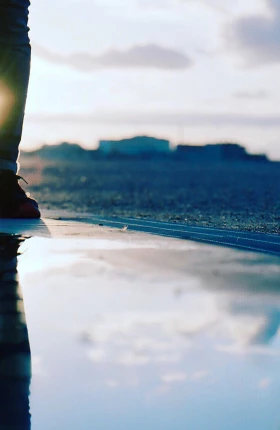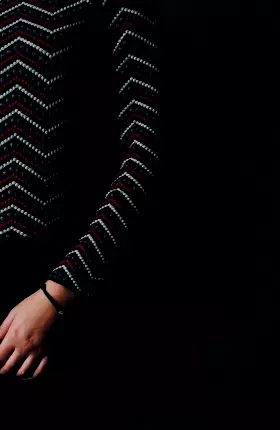Crises may impact our daily life, but COVID-19 has changed our future. Radical shifts in how we live—such as the way online interaction and remote working are now more the norm than an option—are likely here to stay. This raises a crucial question for designers: How do you innovate rapidly—and in the right ways—when behaviors and expectations are changing so much and so fast?
In the human-centered design process, the creators of products, customer journeys, and even policies immerse themselves in the lives and perspectives of real people. They try to understand needs, motivations, and roadblocks. They continually prototype solutions and seek feedback. The idea is to build things that aren’t just advanced but also readily acceptable.
With so many shifts in so short a time, understanding the human perspective is more important than ever. To jump-start the process, BCG explored the key behavioral changes that the COVID-19 crisis has triggered—and their implications. The result is not a roadmap for post-pandemic design; instead, we offer insights that can help organizations better meet people’s needs and desires in the new reality.
New Behaviors and Expectations
BCG conducted more than 40 in-depth interviews—with business executives, design and technology experts, and members of the public—in April 2020. Participants hailed from eight countries across North America, Europe, Asia, and the Middle East. Their responses allowed us to zero in on the new behaviors, preferences, and attitudes emerging from the COVID crisis and, significantly, on the challenges—and design imperatives—that they raise.
New modes of engagement mean more users—and higher expectations—of digital channels. Social distancing and other containment measures have spurred organizations to move to fully digital or to hybrid digital-physical delivery. Gyms, medical practices, and religious organizations have moved their classes, consultations, and ceremonies online. Restaurants are offering online ordering with curbside pickup. Movie studios are releasing first-run films on digital platforms in place of shuttered cinemas.
Before the pandemic, many of these organizations were lagging on the digital front, but they’ve adapted their business models and offerings very quickly. This rapid and dramatic shift to digital has certain implications. For one thing, the number of technology users has increased. Among the expanded audience: children, the elderly, individuals with physical disabilities, and those who were skeptical about replacing in-person with digital interactions. Designers will need to consider the different needs of these users as they create and improve digital channels.
How do you innovate rapidly—and in the right ways—when behaviors and expectations are changing so much and so fast?
Moreover, expectations are likely to be high. Some businesses have been particularly proactive—and successful—in creating robust and convenient online channels. They’ve set the bar high, and users may not have a lot of tolerance for offerings that don’t measure up or for physical workarounds (such as having to visit a store to make a return).
Remote working raises social and technical issues. The crisis has sparked a mass shift to working from home. As a result, the use of remote collaboration tools—particularly videoconferencing platforms—has surged. Our interviews revealed both social and technological impacts of this shift.
Videoconferencing from home often forces people to reveal aspects of their personal lives, whether a piece of art in the background or the presence of a child. We found that attitudes toward this exposure vary. “My colleagues always ask me about the paintings behind me,” one research participant told us. “It fosters a personal conversation that I would not otherwise have had.” Yet not everyone welcomes that intimacy. Another participant worried about the impact on others in the household. “I’m sitting in my living room with my camera on, and that makes it difficult for family members [who want to] come into the room.” Notably, we saw distinct patterns across regions. In the US, for instance, people often embrace the opportunity to reveal aspects of their lives, while in Asia, they tend to have a harder time accepting that transparency.
Technical limitations also play a role. While videoconferencing platforms have come a long way, they still can’t pick up the subtleties of human interaction. Grunts and laughs are missing when large groups are on mute. The significance of facial reactions can be lost because of the time lag. Such deficits make it hard for presenters—and listeners—to read the room and gauge participants’ responses. In interviews, people expressed frustration with conversations that seem unnaturally linear and “inorganic”—a feeling that’s exacerbated by the tendency to multitask on conference calls.
Fluid schedules can blur the boundary between work and personal life. With the move to remote working, the pace and structure of professional life have changed. Many people are finding an upside to this: they’re gaining time back from lengthy commutes, enjoying greater flexibility in planning their day, and pursuing new interests. Some of our interviewees even reported that without the distractions of the office, they’re more productive than ever. But an office environment and office hours help reinforce the boundary between work and home; in its absence, some said it can be difficult to switch off work. Others expressed uncertainty about how to stay “present” at work—to feel connected with colleagues, projects, and decision making when working remotely all the time.
A heightened sense of community brings empathy and altruism to the fore. We found that people are increasingly aware of—and concerned about—the financial, physical, and emotional health of others in their communities. Many of our interviewees said the pandemic has triggered a rise in altruism and empathy—in particular, a greater appreciation for essential workers and the elderly. This heightened sense of community, which extends beyond geographical boundaries, can be seen in the nightly cheering from apartment windows and in organized drives to supply health care workers with personal protective equipment.
Now is the time to figure out what really counts. For many people, the COVID-19 crisis has sparked reflection and introspection. They’re revisiting—and revising—life goals and priorities. Relationships have changed as well. For instance, in cultures where it’s common for children to live apart from their parents—and often at a great distance from them—we are seeing increased connectedness. Witness the seemingly ubiquitous Zoom family get-together.
In human-centered design, the idea is to build things that aren’t just advanced but also readily acceptable.
Issues of security, privacy, and trust have become more complex. Even before the crisis, there was no shortage of perspectives and debate on digital security and privacy. What kind of data should private- and public-sector entities be able to collect? How should they use or share that data? How can individuals trust businesses and government to protect their personal information? There were no easy answers and certainly no consensus, and the pandemic is shining an even stronger spotlight on these issues. Some countries are using sophisticated technologies—many of which collect personal data—to track, trace, and reduce infections. While some participants in our interviews expressed concern about the invasive nature of these technologies, others said they were willing to give up some privacy in order to ensure personal and community safety. Some were concerned about the security of videoconferencing and data-sharing platforms as well.
Designing for the New Reality
Which of these changes are here to stay? There’s no crystal ball, but we can safely predict that some of these shifts—accelerated technology adoption, hybrid digital˗physical delivery, and remote collaboration—will have a lasting impact. For other trends, such as heightened community awareness and greater connectedness, it’s a harder call.
While we don’t know exactly what the future holds, a few things are clear. First, you need to think differently about building and implementing solutions for the new reality. The human perspective is essential for successful design, and that perspective is evolving—rapidly. Human-centered design lets you better understand people’s needs, motivations, and concerns, but it also makes for a more efficient, more flexible design process. By engaging early with users and seeking their input and feedback, you gain valuable insights while still working with paper prototypes and sketches rather than fully built products. So you can pivot early and avoid steering resources in the wrong direction.
Second, it’s important to factor in geographic and cultural nuances: as our interviews made clear, what might work well in one market could fail dramatically in another.
Finally, while there are no sure bets, there are things you can do now to get started. What follows are some general recommendations.
Close the gap between digital and physical experiences. Out of necessity, organizations are pushing digital channels in new and more ambitious directions—a trend that, if anything, will only increase. But as our interviews showed, this effort often results in a user experience that doesn’t quite match the face-to-face interactions it replaces. Closing the gap means striking a careful balance between the convenience of digital channels and the immediacy of in-person experiences.
How do you achieve that balance when you design? The key is to gain a deep understanding of your customers and users through ethnographic research, journey mapping, and behavioral analytics. This reveals not only pain points but also opportunities for innovation and differentiation. Consider video collaboration tools. One pain point—inorganic conversations—spotlights an opportunity to improve the user experience. A savvy designer will evaluate the full breadth of available technologies to see how they might be applied—for example, by using augmented or virtual reality to simulate in-person meetings.
Human-centered design lets you better understand people’s needs, motivations, and concerns, but it also makes for a more efficient, more flexible design process.
Aim, too, for consistent cross-channel experiences—something of particular importance in hybrid digital˗physical environments. An individual’s experience with a brand often spans multiple touch points: a mobile device interface, an online transaction system, in-store displays, delivery and fulfillment services, and so on. In many cases, the different front ends are developed separately and may seem incongruous in an interconnected system—even when they do exactly what they were designed to do. Avoiding this inconsistency requires careful planning, but it’s well worth the effort. In our work reimagining physical and digital environments for a major metropolitan library system, we developed a cross-channel information architecture to ensure that what users experienced in the digital domain was in sync with what they experienced in the physical domain.
But know what not to replicate online. Not all interactions translate well to a digital engagement model. In some cases, sensations like touch, environmental factors like temperature, or simply the physical presence of other people are vital to the experience. So while activities such as painting and exercise classes may work well virtually, others require a more granular approach. Religious services are a case in point, with certain ceremonies losing too much of the experience online. As one interview participant put it, “Hearing other people’s voices [and] physically being there . . . you feel humanity around you.”
Embrace inclusive design and digital upskilling. With so many new users of digital channels, products, and services, it’s important to design with an inclusive lens. Some customer segments, for example, may have challenges around technology access because a required device or broadband connection is not readily available. Others, like the elderly and the very young, may not be used to the interfaces and processes that are old news to digital veterans. Good design is about adoption as well as features. By involving customers from all segments in the design process—and embracing a transparent and collaborative approach to product and service design—you can uncover and account for specific needs and roadblocks.
In our work reimagining the library experience, for example, we interviewed people who don’t use libraries often—or at all. We found that in many cases, these individuals were confused by terms like “circulation” and “call number,” and this was a key reason for their avoidance. So to make sure no one was unintentionally excluded, we created, tested, and implemented terminology and other mechanisms to clearly communicate the library’s offerings.
Digital upskilling is another way to foster adoption. The idea is to spark usage by flattening the learning curve. Airlines are a good example. When carriers install self-service check-in kiosks, they typically position staff nearby to guide customers through the process. The next time those travelers fly, they are less likely to need assistance. But keep in mind that upskilling isn’t only for digital novices. For instance, digital whiteboarding tools have many features that can enhance remote workshops—so many, in fact, that facilitators may need to step in to help organizations use the tools effectively.
Increase the speed of innovation. It’s not enough to meet increased expectations and ensure robust, high-quality, and continually improving experiences. You need to do so quickly. And you need to respond to sudden and unexpected shifts quickly as well. Enabling such a fast pace means developing processes—and a culture—that let you iterate rapidly while engaging with end users. Agile methodologies —embraced by a growing number of organizations—are a proven way to boost responsiveness to change and feedback
The key is to gain a deep understanding of your customers and users through ethnographic research, journey mapping, and behavioral analytics.
Keep in mind, though, that in the new reality, many people will likely choose to work from home long term. So think creatively about how you can support distributed design teams (and physically separated teams of any type). What can you do, for example, to spark collaboration and networking? One idea: encourage ad hoc digital interactions—by including an “I’m feeling lucky”-style button on your videoconferencing platform, for instance, so team members can “bump into each other” virtually.
Foster interconnectedness and microcommunities. While the heightened sense of community might not prove permanent, it’s worth considering how to incorporate it into design. “We’re already seeing new types of cooperative practices and behaviors emerge, [and] designers can certainly help amplify and connect those,” said Terry Irwin, director of the Transition Design Institute at Carnegie Mellon University. For example, think about building virtual microcommunities—small, geographically diverse groups sharing a common interest—to foster a sense of familiarity, personalization, and connectedness. And explore how you can adapt your social marketing strategies to nurture and support a feeling of community.
Interconnectedness and interdependencies also operate on a more technical level. The things we design increasingly function within ecosystems. By adopting a systems lens and understanding the relationships and connections within your ecosystem, you can better recognize how your product or service fits and what levers you should pull for maximum impact.
As always, build trust. Concerns about COVID-19 apps and policies, and about the technologies that support remote working, have added a new layer to the debate around trust. To be sure, there is no one-size-fits-all solution. But there are some best practices. The BCG Henderson Institute has identified four key drivers of trust : transparency; security and privacy; reliability and credibility; and proximity and intimacy. For example, companies should clearly communicate their new health practices and policies. This will put employees at ease, reducing their fears about safety and removing any mystery—or worries—about company actions.
The COVID-19 crisis has sparked rapid, large-scale changes in human behavior. And organizations have adapted to meet people’s needs in new ways. The challenge now is to build on that momentum and keep adapting—and innovating. Human-centered design is a powerful way to understand evolving behaviors, preferences, and pain points and to focus efforts in the right places in the right ways. By unlocking the user’s perspective, designers can build solutions that work well and work widely in our new reality—whatever that ultimately looks like.











